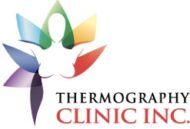Easy Steps to Breast Cancer Prevention
If we consider that only 5-10 % of breast cancers have a genetic or hereditary predisposition, then it stands to reason that the other 90-95% have hormonal and/or environmental causes – causes that you can do something about. Lets start with hormones. Estrogen (in one its metabolic forms, estrone) increases cell division and, as a result, increases the risk of malignant changes. Anything that increases estrogen levels in the body increases proliferation of hormone-sensitive tissues, especially the breast and uterus. Estrogen, produced by the human body, is also available from many other sources. It is found in many products such as hormone replacement therapy, birth control pills, estrogen creams, and in the most dangerous group of toxic chemicals – xenoestrogens. Chlorinated pesticides and plasticizers used in the manufacture of plastics have been found in 100% of human tissues tested, and in ever-growing concentrations. Soft plastic water bottles, shrink-wrap and plastic food containers (especially when heated in a microwave) leach xenoestrogens into your body. Eating or drinking from soft plastic packaging should be strongly discouraged. Radiation, which also comes from different sources, accounts for approximately 10% of all breast cancers. There is natural radiation from the sun, and man-made radiation such as x-rays, isotopes, and nuclear radiation. Many health care professionals and consumer advocates propose that mammograms should not be used for routine or repetitive breast cancer screenings. Don’t miss-understand this point – mammography is a great diagnostic tool, especially when used in conjunction with ultrasound – but it has its limitations. The cumulative damage from radiation over a period of continuous exposure and the simple fact that upper outer quadrants of the breast are almost impossible to squeeze into the mammography machine. Incidentally, this is where most breast tumors develop, and are not always within the scope of a mammogram. Another drawback is that by the time a lesion is detected by a mammogram it is on the average 9 years in the making. Alternatively, thermography provides for the earliest possible detection of angiogenesis, i.e. proliferation of blood vessels, utilizing a painless, effective and safe procedure with no radiation or compression of breast tissue. What can you do to prevent hormonal and environmental causes of breast cancer? Avoid exposure to toxic chemical xenoestrogens and other carcinogenic household products.
|
Here is an example of a program that I would advise for many of my patients:
To begin with, a detailed case history of the individual is taken to identify potential problem areas such as current health condition, past diseases that maybe caused by other medications, and unresolved physical and psychological issues. Once the case “picture” is complete and there is a clear identification of the imbalances, a therapeutic approach is applied to address the issues. Since each individual and their case history are unique, it makes sense that each case requires a different approach towards good health.
Early Screening Technology such as Medical Infrared Thermography (Breast Thermography) can help to identify pre-cancer situations. Combined with the basic principles, supplements, homeopathic medications and lifestyle modifications listed above, you and your doctor can develop a proactive program to help prevent the process of early tumor formation.
Establish a pattern of health that is drug free and disease free with the most basic functions under control: eat well (digestion), sleep well and eliminate well. If you are suffering from any of these disfunctions you have to get them resolved first.
Start and maintain an exercise program that addresses three key components of health: such as duration (aerobics), strength (weight resistance), and flexibility (stretching). A moderate daily exercise routine will promote weight loss and hormonal balance, stabilizing your mood and the overall feeling of well being.
Increase your consumption of vegetables, especially cruciferous family – cabbage, broccoli, brussel sprouts and kale. The main ingredient in these vegetables is indole carbinols, which promote 2 hydroxyestrone, (a protective estrogen) and counters the proliferative effect of carcinogenic 16 alphahydroxy estrone (a bad estrogen). Indole carbinols are also available in capsule form as I3C or DIM.
Change to a high fiber diet that includes foods primarily from plant and grain based varieties. Fiber helps with eliminating estrogens and lipids out of our bowels and helps promote a healthy intestinal function. You should also keep your intestinal flora healthy with the use of probiotics.
Maintain adequate levels of all B-complex vitamins through a diet rich in unrefined grains including wheat germ. A good quality B-complex supplement could be very important.
Consume foods such as garlic, onions, lettuce and cruciferous vegetables that promote bonding of bile to glucuronic acid which aids our body in removing bad estrogens. Calcium D-Glucaric acid is a supplement that improves estrogen metabolism. It should be taken in doses of 500mg twice daily.
Inositol hexaphoshate, known as IP-6, 1200mg daily. Derived from rice bran, IP-6 can decrease cell division; induce normal cell death and stop metastases.
Other helpful supplements include: flaxseed that helps excrete excess estrogen safely out of the body. Fish oil – Omega 3 essential fatty acids adds more protection. Vitamin E is a fat-soluble antioxidant and is found to be critically low in breast cancer patients. Supplementation of 400 to 800 units with Selenium should be taken daily.

